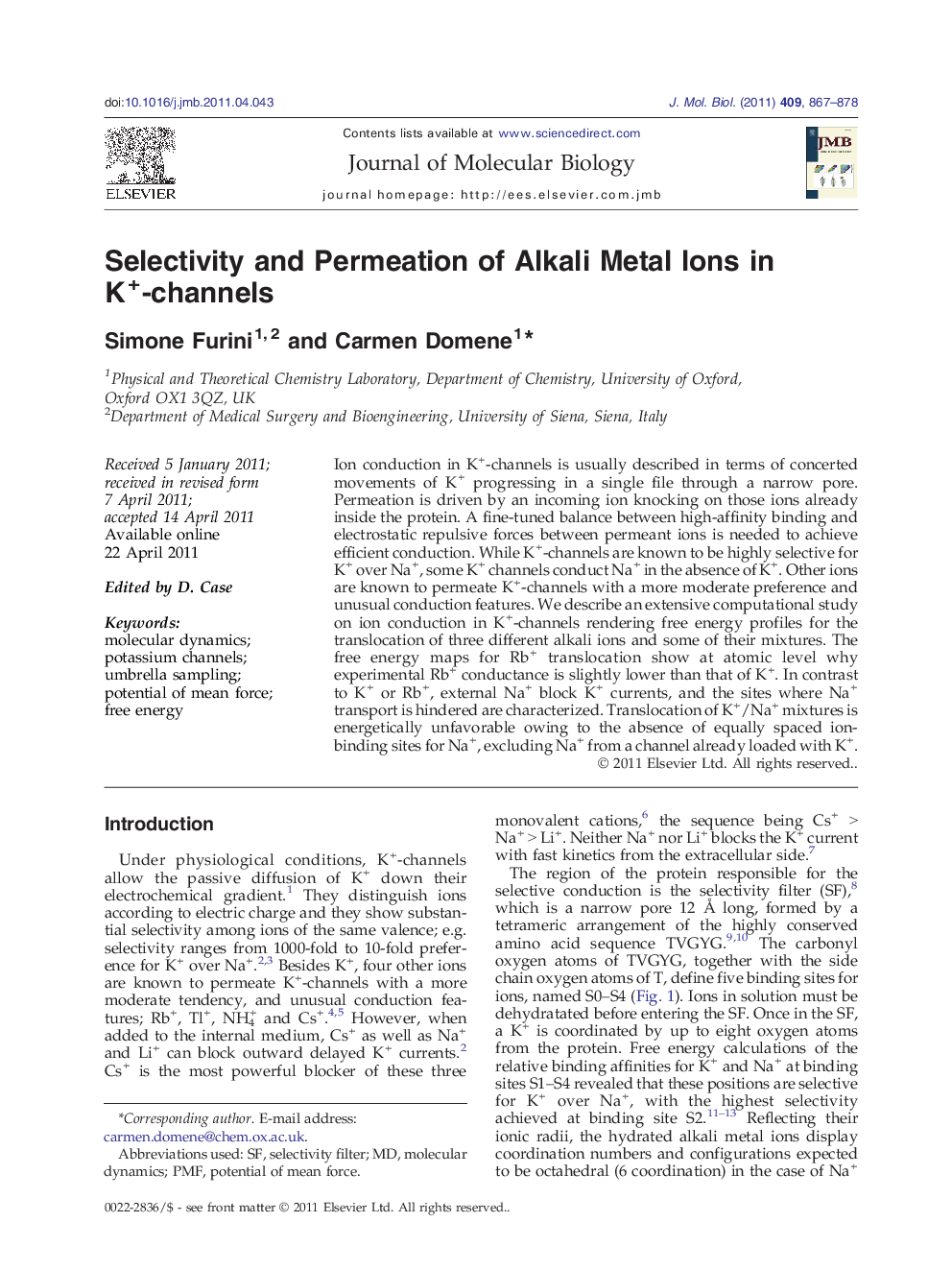| Article ID | Journal | Published Year | Pages | File Type |
|---|---|---|---|---|
| 2185256 | Journal of Molecular Biology | 2011 | 12 Pages |
Ion conduction in K+-channels is usually described in terms of concerted movements of K+ progressing in a single file through a narrow pore. Permeation is driven by an incoming ion knocking on those ions already inside the protein. A fine-tuned balance between high-affinity binding and electrostatic repulsive forces between permeant ions is needed to achieve efficient conduction. While K+-channels are known to be highly selective for K+ over Na+, some K+ channels conduct Na+ in the absence of K+. Other ions are known to permeate K+-channels with a more moderate preference and unusual conduction features. We describe an extensive computational study on ion conduction in K+-channels rendering free energy profiles for the translocation of three different alkali ions and some of their mixtures. The free energy maps for Rb+ translocation show at atomic level why experimental Rb+ conductance is slightly lower than that of K+. In contrast to K+ or Rb+, external Na+ block K+ currents, and the sites where Na+ transport is hindered are characterized. Translocation of K+/Na+ mixtures is energetically unfavorable owing to the absence of equally spaced ion-binding sites for Na+, excluding Na+ from a channel already loaded with K+.
Graphical AbstractFigure optionsDownload full-size imageDownload high-quality image (249 K)Download as PowerPoint slideResearch Highlights► This study extends our knowledge of how selectivity is realized in K+-channels. ► Energetic analysis for mixtures of Na+/K+ reveals the key for K+versus Na+ selectivity. ► A discontinuity in the binding sites excludes Na+ from a filter loaded with K+. ► Energy maps show why experimental Rb+ conductance is lower than K+ conductance
